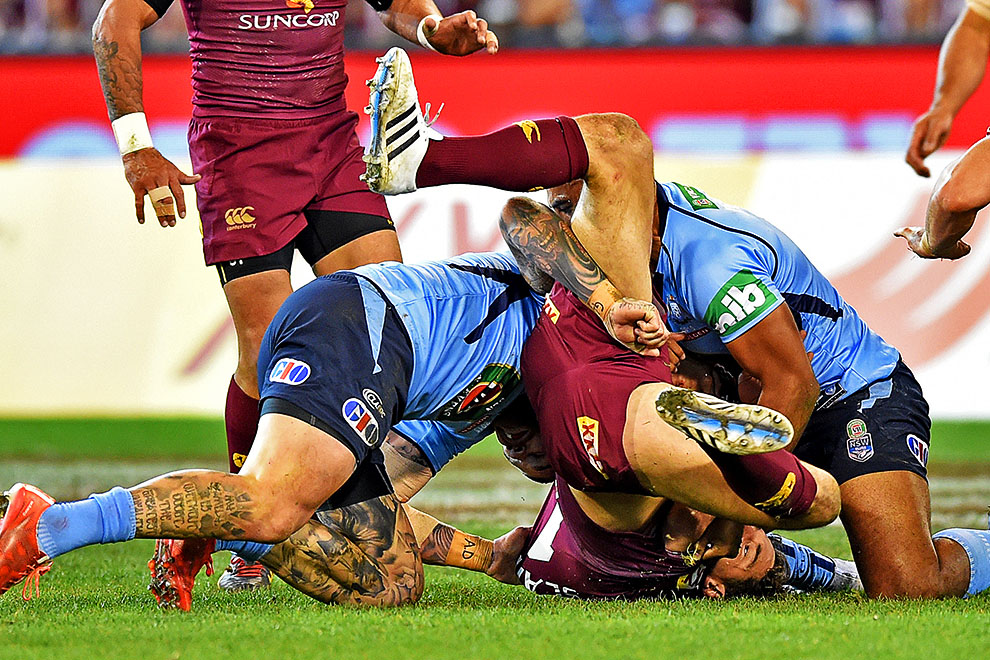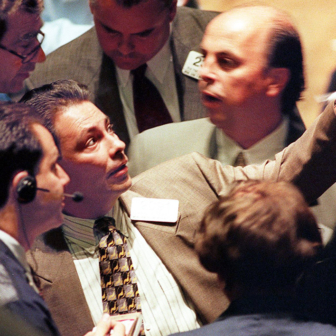Reports that the nation’s two dominant football codes are in talks with Google, Facebook, Netflix and Fetch TV over digital and mobile coverage rights have caused a stir over the past week. The fact that these stories began circulating the day before the second State of Origin rugby league match appears more than coincidental. Played at the Melbourne Cricket Ground before a crowd of over 91,000 spectators, the game was the highest-rating television program of 2015 so far, peaking at a national audience of 4.193 million viewers. Broadcast television can still attract massive audiences for live sport events, and this highlights exactly why global digital media behemoths like Google and Facebook might want to get in on the action.
The attention the news attracted says as much about the changing dynamics of television and video consumption as it does about the prospects of the football codes. This particular future has been arriving for some time. Google purchased YouTube almost a decade ago and has been slowly but surely professionalising and commercialising the content on this online video-sharing platform. Netflix might be new to Australia, but it launched as a DVD hire service in the United States nearly two decades ago and made a concerted push into streamed online content between 2007 and 2010. A year later, the then CEO of the online television streaming service Hulu, Jason Kilar, provoked industry controversy when he laid out a vision for television’s future in a company blog post: more online consumption, fewer advertisements, multiple screens, lower margins and rapid innovation all feature.
So far, the almost unrivalled value of live television sport to major advertisers has protected commercial free-to-air and pay television networks from significant disruption. But as advertising revenues shift towards online and mobile platforms globally, so too do growing portions of sport content. Viable technology and revenue models for streaming sport and monetising online video have been in development for several years.
Red Bull Media House is an international pioneer in the creation and distribution of online video featuring action sports such as surfing, skateboarding and motocross. It uploaded its first video to YouTube in 2006 and now operates the Red Bull TV platform. YouTube streamed the Indian Premier League cricket tournament live in 2009, and in 2011 streamed the Copa America football championship to over fifty countries. Live streaming of the 2014 FIFA World Cup, accessed via rights-holder sites and apps owned by ESPN, Univision and ITV, set new traffic records around the world.
The US National Football League, or NFL, has recently teamed with YouTube to create an official channel featuring daily content, including game previews, in-game highlights and clips. The NFL has also signed a revenue-sharing deal with Twitter encompassing in-game highlights and clips, which resembles a similar deal with NASCAR motor racing. The spectacularly violent Ultimate Fighting Championship has given fans free access to selected fights on Facebook. Even the Australian Football League, or AFL, has made noises about selling games direct to fans online once its current coverage rights deal expires in 2016. Viewed in this light, the notion that Facebook or Google might one day own the coverage rights to the footy is less than novel.
What might turn out to have been a landmark moment in the history of online sports coverage occurred less then a month ago. On 3 June, Yahoo! announced it had secured the exclusive rights to stream an NFL game between the Buffalo Bills and Jacksonville Jaguars, to be played in October at Wembley Stadium in London, paying a reported US$20 million for the privilege. This will be the first time a regular season game is streamed free to online viewers around the globe. A fascinating feature of this announcement was the intense competition involved in securing the rights to the game, with Yahoo! successfully outbidding Twitter. The London event represents a concerted attempt to expand the NFL’s international audience. It is also a test-bed for the development of an international online viewing model that, initially at least, sits alongside existing domestic broadcast coverage arrangements.
Despite the codes’ blunt negotiating tactics, Australia’s limited market size works against the stimulation of competitive tension, particularly given Telstra’s overwhelming dominance of the telecommunications sector. The last round of coverage deals saw Telstra pay approximately $153 million (to the AFL) and $100 million (to the National Rugby League, or NRL) over five years for digital and mobile rights packages. With perhaps the exception of Optus, no other Australian telecommunications carrier is in a position to deliver these amounts, suggesting that Telstra has limited incentive to significantly lift its offer in the next round. The introduction of Google, Facebook, Netflix and Fetch TV to the negotiating table expands the range of potential bidders.
These negotiations also reflect the fact that there are limits on how much the free-to-air networks and Foxtel can pay for future broadcast rights. Men’s professional sport is as popular as ever, but the story of the television industry as a whole is one of uneven audience numbers and stagnating advertising revenue. From the perspective of the AFL and NRL, marked revenue growth is far more likely to be found in the digital and mobile world, as the deal between Yahoo! and the NFL indicates.
The events of the past week signal the moment the future arrived for followers of this country’s two biggest football leagues. Multiple screens, mobile and tablet devices, live streaming and digital delivery platforms are increasingly integral features of sport and media. In contemplating how this realisation finally dawned in Australia, it is worth recalling an aphorism attributed to science fiction writer William Gibson: “The future is already here – it’s just not very evenly distributed.” •




